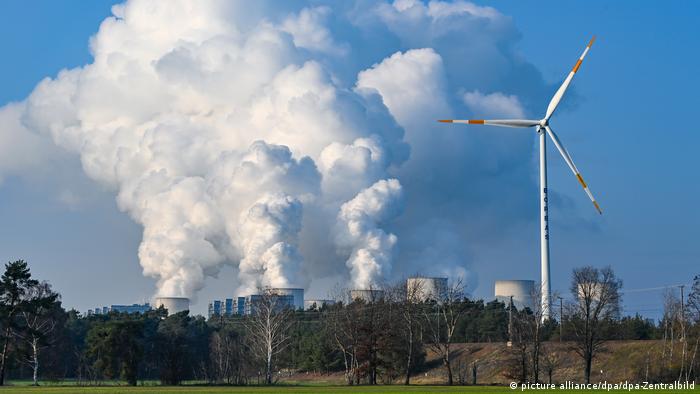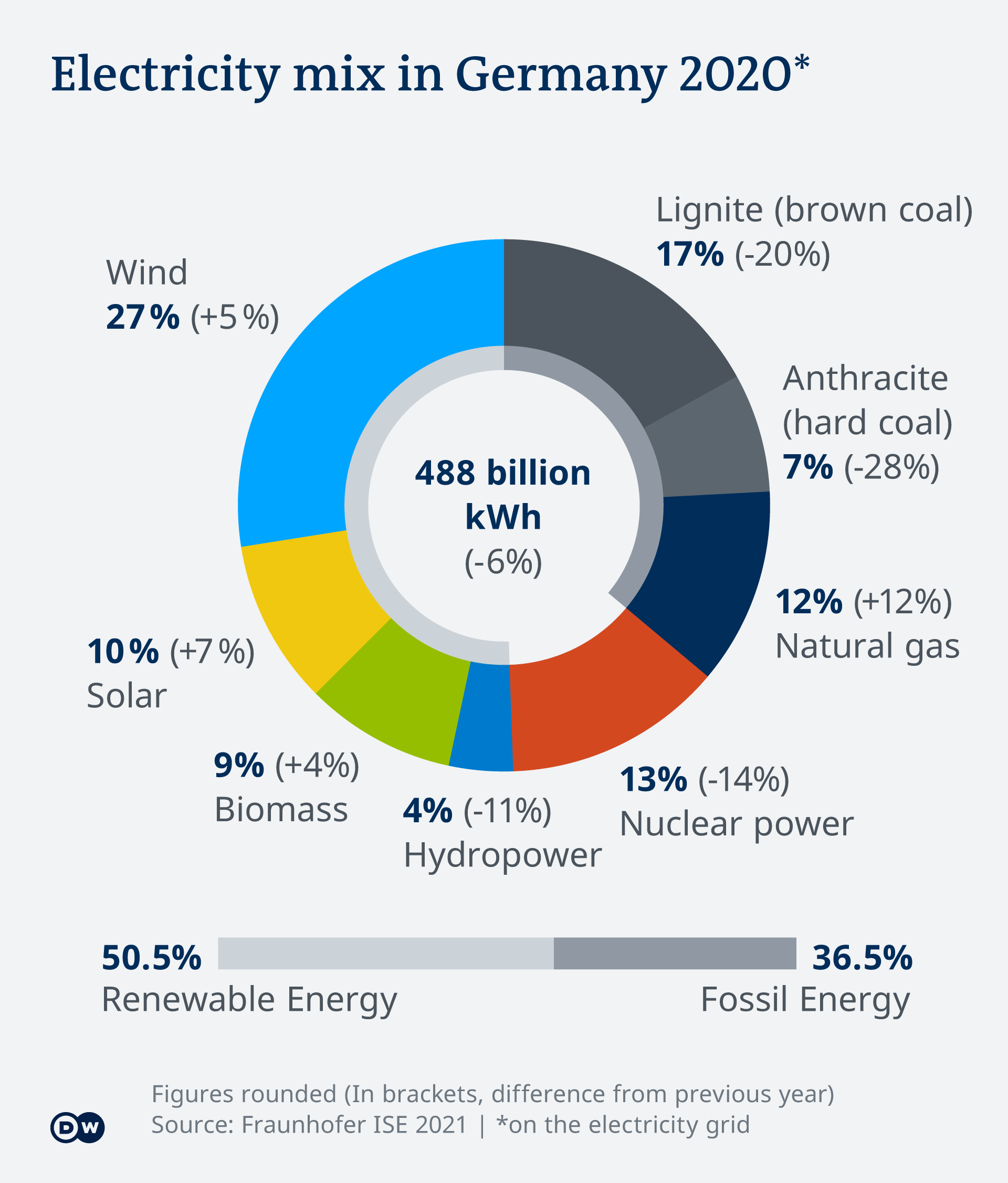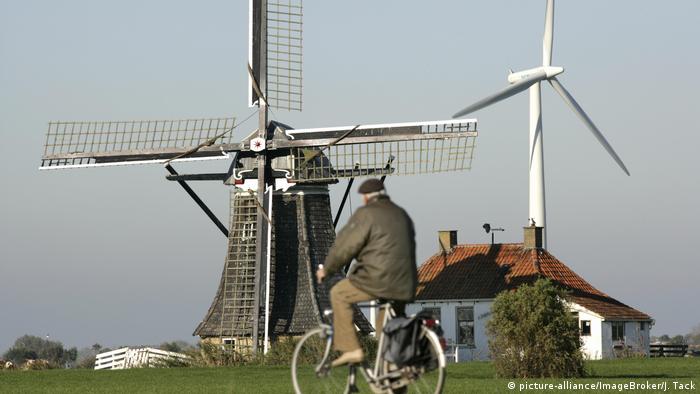The sudden push to reduce Europe's dependence on Russian gas and oil could trigger a paradigm shift to clean energy sources that might be quickly scaled up.

Which way will the West turn - to increased renewables or non-Russian fossil fuels?
Europe has been pushing gas and nuclear as an essential part of the energy transition from carbon-heavy fossil fuels like oil and coal. But since Ukraine was invaded, Europe's dependence on Russian gas has inspired a sudden push for energy independence, especially via renewables.
Germany's Finance Minister Christian Lindner, of the pro-business FDP, now calls renewables "freedom energies," while Chancellor Olaf Scholz labels them "crucial for our security."
"The faster we push ahead with the expansion of renewable energies, the better," Scholz said a few days after the invasion.
Yet, at the moment, Germany is reliant on Russia for both oil and at least 32% of its gas. Reliant to the tune $700 million (€640 million) a day, according to some estimates.
In response, the Stand with Ukraine coalition, comprising hundreds of organisations worldwide including environmental groups Greenpeace and 350.org, has called for a ban on Russian energy imports. It went one step further by calling on world governments to end fossil fuel production — and to "manage the transition to a clean and safe renewable energy in a way that is fast and fair."
"Putin has deliberately weaponised fossil gas to increase his existing energy dominance over the European Union," stated the coalition when publishing a letter Friday to "end global fossil fuel addiction." They added that gas and oil were employed by Putin "to fuel terror with escalating violence, underscoring the fossil fuel system's role in driving conflict."
Noting that 40% of Russia's federal budget comes from oil and gas — which also comprise 60% of Russian exports — the coalition calls for "bold steps towards the radical decarbonization of our societies."
The release of a damning IPCC climate report on Monday gave further incentive to bring forward the clean energy transition.
But do we have the means to fast track renewables expansion?
Diversification or decarbonization?
The question of energy independence remains divided between two camps: should self-sufficiency come from other local or 'friendly' gas, or even nuclear sources, meaning diversification; or through more ambitious energy independence achieved via local clean energy supplies such as wind and solar, which is to say decarbonization?
This split was evident in the International Energy Agency's detailed 10-point plan, released on Thursday, to reduce EU reliance on Russian natural gas by next winter.
While the plan focuses partly on decarbonization through greater renewable uptake, it also demands greater gas diversification — and proposes temporarily delaying the shutdown of five nuclear reactors in Europe.
"In the short-term, the only real option is to diversify," said David Victor, a professor of innovation and public policy at the School of Global Policy and Strategy at the University of California San Diego.
While he is confident that renewables can be scaled up in the medium term, especially offshore wind, he says political resistance to large-scale wind farm sites, for instance, will hold back significant expansion in the more immediate future.
"I don't see governments realistically removing those obstacles," he explained, referring to an unavoidable public backlash.
But for UK-based climate think tank Carbon Tracker, the argument that Europe could limit its dependence on Russian gas by diversifying into local 'bridging' fossil fuel sources, and importing liquid natural gas, also known as LNG, from the US and elsewhere, is neither realistic nor cost-effective.
The initial problem is the long lead time, which can be decades, required to build new gas terminals and source local deposits, meaning immediate price pressures will not be resolved, according to a Carbon Tracker blog post.
By contrast, existing solar and wind energy resources can be significantly scaled up as part of existing decarbonization policies. It can be done more cost-effectively in line with a precipitous drop in renewable energy prices.
"Renewables are already cheaper investments than existing gas capacity," said Jonathan Sims, a senior analyst at Carbon Tracker. He adds that battery storage costs will also be financially competitive by 2030, meaning variable wind and solar energy production will be less of an issue.
Ketan Joshi, an Oslo-based author and climate science communicator, says we already have "strong knowledge about how to integrate wind and solar into complex, interconnected grid systems," adding that it's "certainly technically and economically viable."
DOUBLE HARVEST: SOLAR PANELS ON FARMSHarvesting electricity — and berriesFabian Karthaus is one of the first farmers in Germany to grow raspberries and blueberries under photovoltaic panels. His solar field near the city of Paderborn in northwestern Germany is 0.4 hectares (about 1 acre), but he would like to expand it to 10. He could then generate enough electricity for around 4,000 households — and provide more berries for supermarkets.
Changing minds and regulations
Like Victor, Joshi cautions that "the roadblocks will be political and social," including getting "communities and regions that host the new technologies" to embrace the transition.
Sims, meanwhile, sees the "numerous barriers" to a more ambitious decarbonization drive as "policy-related" rather than economic or technical.
One stumbling block is very lengthy regulatory approval processes for wind and solar projects — which in Italy, for example, are as long as seven years, according to Sims, leaving the country well short of clean energy capacity required to meet climate goals.
This, he said, can cause investors to prefer single "large-scale new build gas projects" because they are simpler to get approval for than numerous "smaller wind or solar farms."
But several EU member states are looking to relax or simplify planning and regulatory processes to "accelerate low carbon capacity deployment rates," said Sims. The current crisis will likely hasten this loosening.
Electric heating to spark the energy transition
So what kind of power consumption can be decarbonized in the short-tern to reduce reliance on gas?
"Electrifying homes, cars, industry and buildings is vital to remove gas demand," said Ketan Joshi. "These aren't like power grids; you don't need any 'bridge'. You just need to swap the gas infrastructure for clean [energy]."
In Germany alone, buildings generate around a quarter of greenhouse gas emissions through their fossil-based energy consumption — especially heating.

To both minimize Russian fossil fuel dependence and mitigate climate change, German environmental think tank the Wuppertal Institute this week released a study, commissioned by Greenpeace, that shows how heating can be completely run on renewable energies by 2035.
The key will be to substitute electric heat pumps, powered by renewables, for gas and oil heating systems often fed by Russian fossil fuels.
"A smart strategy focused on increasing efficiency and expanding renewables not only reduces supply risks," said the Institute in a statement, adding that the transition would also be "highly economically attractive for households, businesses and public institutions."
For environmental activist and author Bill McKibben, more of Europe could transition much sooner to heat pumps. "President Biden should immediately invoke the Defense Production Act to get American manufacturers to start producing electric heat pumps in quantity, so we can ship them to Europe where they can be installed in time to dramatically lessen Putin’s power," he wrote this week.
While David Victor insists that in the short-term, diversified gas sources, including imported LNG delivered on floating terminals, will be necessary if the EU is to quickly ween off Russian hydrocarbons, Jonathan Sims suggests that decarbonization can also be aggressively pursued.
Though gas has "played a valuable role" in the initial transition from coal-fired power, for Sims this "short-term role must not be prolonged" as it will require extensive investment in large-scale infrastructure that will not provide returns.
Building a power system around "lower cost and lower risk renewables" is an "opportunity to ultimately become self-sufficient with our energy supplies," he said, adding that the approach will hasten progress to net zero emissions targets.
Edited by: Tamsin Walker
THE FUTURE OF WIND POWERThen and nowWind power has been used for centuries. It pumps water, grinds grain, saws wood and brings sailing ships to their destination. In Europe, there were hundreds of thousands of wind turbines in the 19th century. The Dutch mainly used them to drain marshes. Today, wind power generates clean electricity and is central to meeting climate targets.


No comments:
Post a Comment